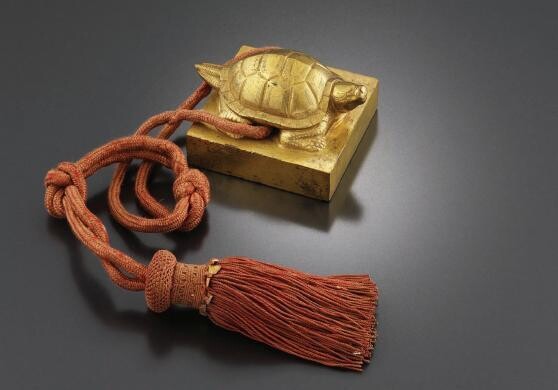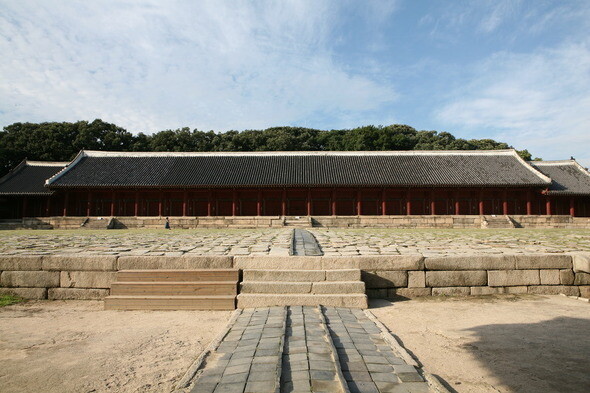hankyoreh
Links to other country sites 다른 나라 사이트 링크
Jongmyo shrine documents registered with UNESCO’s Memory of the World

While South Korea was frustrated in its campaign to have the comfort women records registered with UNESCO’s Memory of the World, it did manage to score a homerun by having one site inscribed on UNESCO’s top three world heritage lists – the first time this has ever happened.
The site that received this honor was Jongmyo (registered as a historical site with the government), a shrine for the Korean royal family during the Joseon Dynasty. The Royal Seal and Investiture Book Collection of the Joseon Dynasty, which are enshrined in each king’s chamber at Jongmyo, were registered with UNESCO’s Memory of the World on Oct. 31. This means that the shrine’s buildings, ceremonial rites and furnishings have now all been added to UNESCO’s three world heritage lists.’
Jongmyo’s main buildings, including Jeongjeon Hall, were registered as a World Heritage Site in 1995, and the shrine’s ceremonial rites, including those related to music, dance and food, were added to the list of Intangible Cultural Heritage in 2008. With the 331 royal seals and 338 royal messages placed in the royal chambers that have now been registered with Memory of the World, Jongmyo has achieved something that no other cultural site in the world has ever done.

The royal seals and messages are key records of the 600-year history of the Yi dynasty, which ruled Joseon from 1411 until the death of Sunjeong (wife of Sunjong, the last emperor of Korea) in 1966. The royal seals, which are ceremonial seals made of gold, silver and jade, were commissioned when bestowing new titles upon deceased kings and queens or when proclaiming queens and crown princes. The royal messages were engraved on bamboo and jade when a crown prince, a crown princess, a queen or a concubine was chosen.
Records of the Joseon Tongsinsa and of the National Debt Redemption Movement at the end of the Joseon Dynasty, which were simultaneously registered with UNESCO, are also regarded as having great historical significance. The Tongsinsa were diplomatic envoys that Joseon dispatched at the request of Japan’s shogunate on 12 occasions between 1607 and 1811. This addition to the list is composed of 333 records, which include diplomatic documents that the Tongsinsa left at major stops in Korea and Japan, as well as the results of artistic exchange, including drawings and poetry.
The ‘Archives of the National Debt Redemption Movement’ encompass 2,472 records related to this movement, which took place around Daegu between 1907 and 1910. This is South Korea’s only entry on the Memory of the World list from the early modern period.
By Noh Hyung-seok, staff reporter
Please direct questions or comments to [english@hani.co.kr]

Editorial・opinion
![[Editorial] Does Yoon think the Korean public is wrong? [Editorial] Does Yoon think the Korean public is wrong?](https://flexible.img.hani.co.kr/flexible/normal/500/300/imgdb/original/2024/0417/8517133419684774.jpg) [Editorial] Does Yoon think the Korean public is wrong?
[Editorial] Does Yoon think the Korean public is wrong?![[Editorial] As it bolsters its alliance with US, Japan must be accountable for past [Editorial] As it bolsters its alliance with US, Japan must be accountable for past](https://flexible.img.hani.co.kr/flexible/normal/500/300/imgdb/original/2024/0417/6817133413968321.jpg) [Editorial] As it bolsters its alliance with US, Japan must be accountable for past
[Editorial] As it bolsters its alliance with US, Japan must be accountable for past- [Guest essay] Amending the Constitution is Yoon’s key to leaving office in public’s good graces
- [Editorial] 10 years on, lessons of Sewol tragedy must never be forgotten
- [Column] A death blow to Korea’s prosecutor politics
- [Correspondent’s column] The US and the end of Japanese pacifism
- [Guest essay] How Korea turned its trainee doctors into monsters
- [Guest essay] As someone who helped forge Seoul-Moscow ties, their status today troubles me
- [Editorial] Koreans sent a loud and clear message to Yoon
- [Column] In Korea’s midterm elections, it’s time for accountability
Most viewed articles
- 1[Column] The clock is ticking for Korea’s first lady
- 2Samsung barricades office as unionized workers strike for better conditions
- 3[Editorial] When the choice is kids or career, Korea will never overcome birth rate woes
- 4Why Israel isn’t hitting Iran with immediate retaliation
- 5[News analysis] After elections, prosecutorial reform will likely make legislative agenda
- 6[Editorial] Does Yoon think the Korean public is wrong?
- 7S. Korea, Japan reaffirm commitment to strengthening trilateral ties with US
- 8[Editorial] As it bolsters its alliance with US, Japan must be accountable for past
- 9Japan officially says compensation of Korean forced laborers isn’t its responsibility
- 10Faith in the power of memory: Why these teens carry yellow ribbons for Sewol